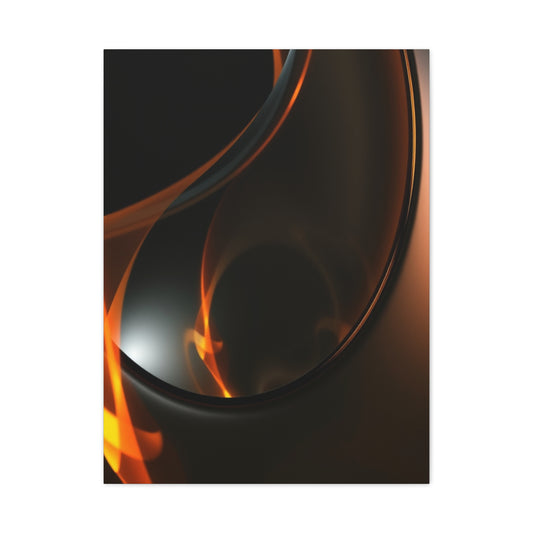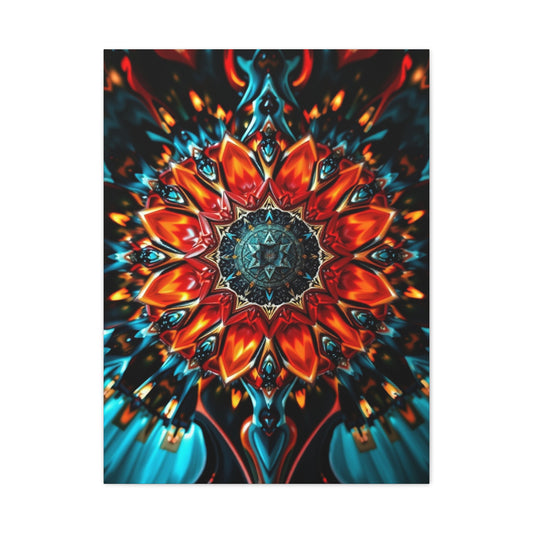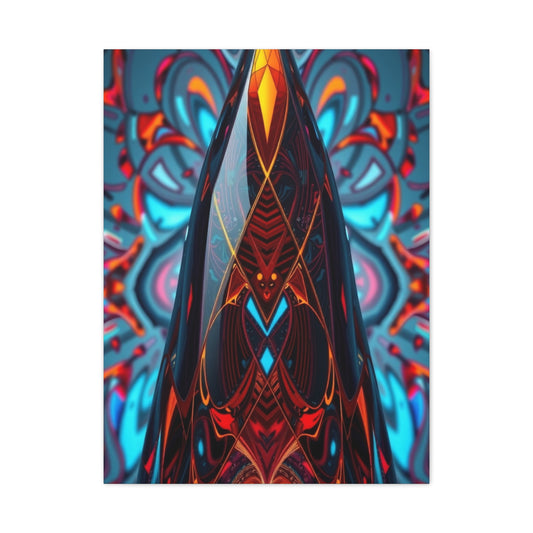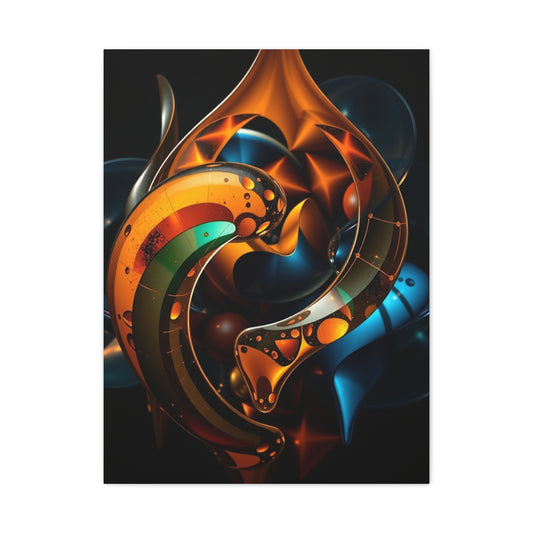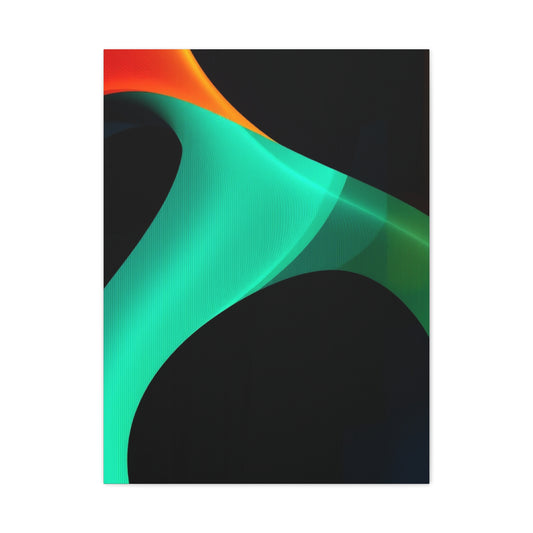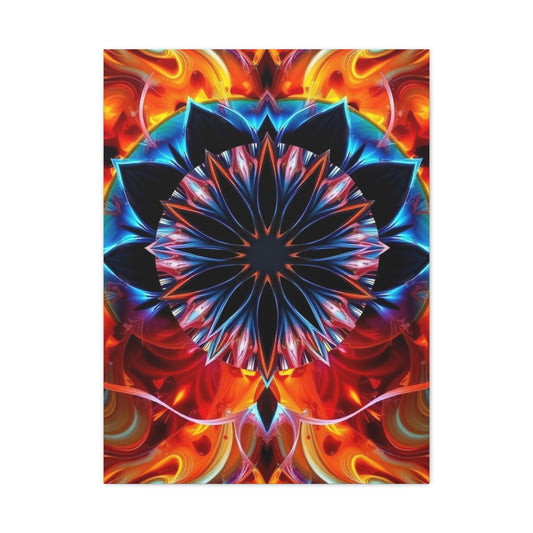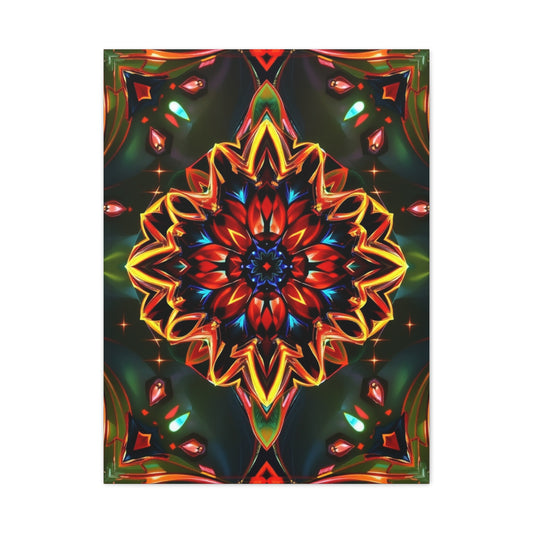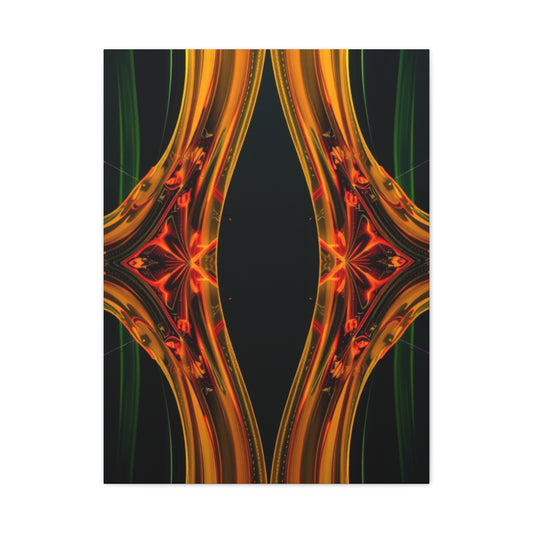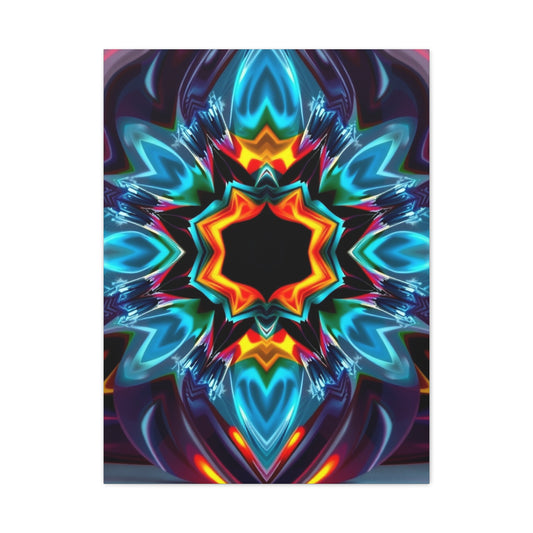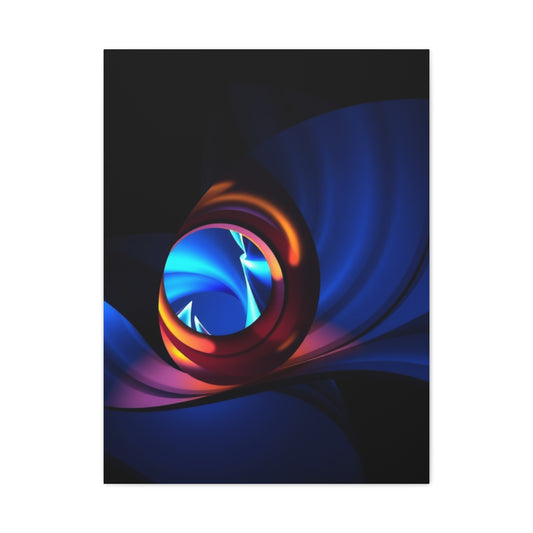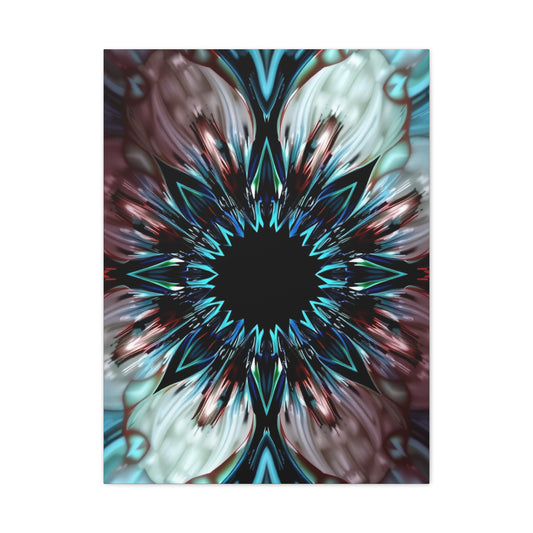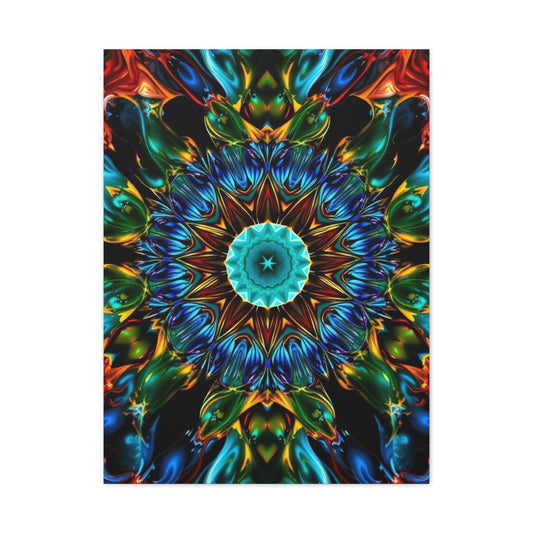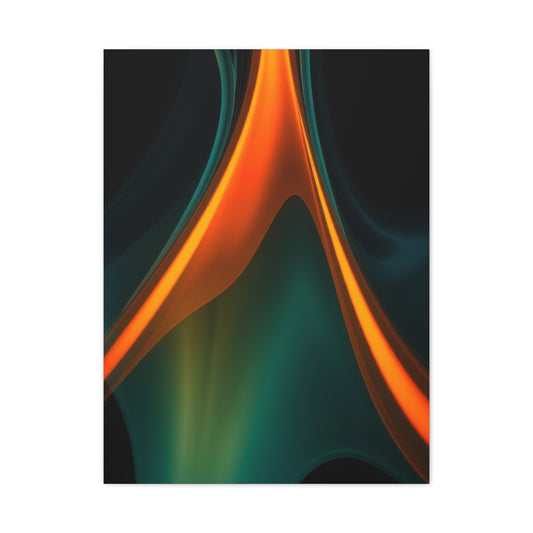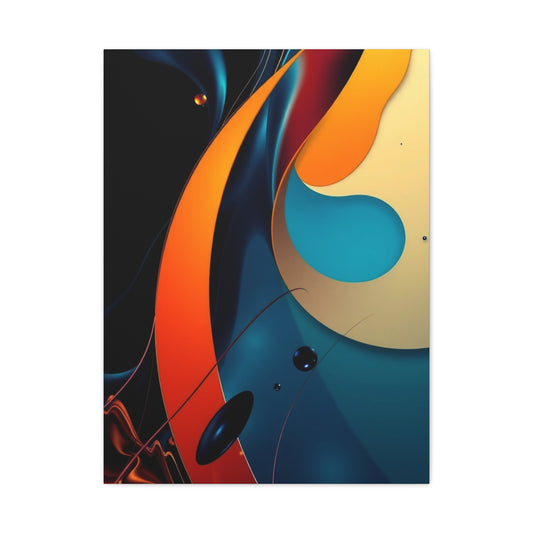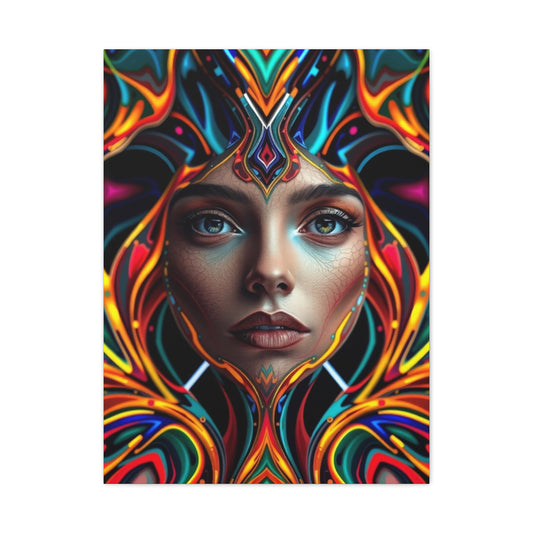Discovering Optimal Abstract Shape Patterns Wall Art Solutions for Contemporary Living Spaces
Abstract wall art represents one of the most sophisticated and multidimensional avenues for enhancing interior environments, particularly within residential living spaces. Its power lies not only in aesthetic flexibility but also in its emotional, psychological, and cultural richness. By incorporating abstract artwork into the home, one transforms simple architectural enclosures into visually dynamic and intellectually engaging sanctuaries. Abstract art does more than fill a wall—it reshapes how we feel, think, and interact within our private domains. This in-depth examination highlights the myriad reasons why abstract wall art has earned its place as a cornerstone of contemporary interior decoration and continues to captivate homeowners, designers, and art lovers alike.
The foundational appeal of abstract wall art lies in its ability to communicate on a level beyond literal meaning. Unlike figurative art that portrays specific objects, people, or scenes, abstract compositions open the door to personal interpretation. Shapes, colors, textures, and lines interact in ways that invite viewers to impose their own emotional frameworks onto what they see. This personal engagement becomes especially valuable in residential settings, where every decorative decision reflects aspects of the inhabitant's identity, mood, or aspirations. Abstract art allows each person in a space to see something different—something meaningful—and in doing so, it becomes deeply personal and endlessly interpretive.
What further elevates abstract wall art is its remarkable versatility. Because it does not adhere to specific forms or subjects, it can harmonize with virtually any interior design style. In a minimalist setting, for instance, a monochromatic or line-based abstract piece can emphasize clean geometry and open space. In contrast, vibrant, large-scale abstract canvases can energize eclectic or bohemian interiors, injecting color and movement that anchor the design. Even traditional or vintage-inspired spaces benefit from abstract pieces that provide a refreshing contrast, balancing ornate details with modern visual tension. This universal adaptability makes abstract wall art an invaluable tool for designers and homeowners alike, enabling consistent visual flow or intentional disruption as desired.
Psychologically, the presence of abstract artwork within living environments yields meaningful benefits. Studies in cognitive science have shown that engaging with non-representational imagery stimulates areas of the brain associated with emotional regulation, memory, and creative processing. Abstract art encourages the mind to explore, imagine, and reflect—creating mental space for pause and introspection in an otherwise cluttered world. In family rooms, abstract art can promote shared conversations about interpretation. In bedrooms, it can evoke calm and serenity through soft palettes or fluid forms. In home offices, bold abstract pieces might spark innovation and productivity. No matter the room, abstract artwork adapts to the emotional tone and practical function of the space.
Beyond its immediate psychological effects, abstract art also acts as a cultural and temporal bridge. Its evolution throughout the 20th and 21st centuries has been shaped by profound philosophical and artistic movements—from Cubism and Futurism to Abstract Expressionism, Minimalism, and modern digital abstraction. Each abstract piece, whether it be a homage to pioneers like Kandinsky or a contemporary exploration in texture and form, carries within it a lineage of artistic experimentation. Integrating such works into a residential environment creates layers of historical and cultural reference, allowing homeowners to participate in an ongoing visual dialogue that spans generations and artistic ideologies.
Importantly, selecting the right abstract art for a space involves more than simply choosing a beautiful canvas. It requires attention to scale, placement, lighting, and color relationships. A piece that is too small may get lost on a large wall, while one that’s too bold may dominate a subtle, serene room. The textures within a painting might interact with natural or artificial lighting in compelling ways, casting shadows or revealing hidden depth depending on the time of day. Therefore, selecting and installing abstract wall art is a creative process in itself—one that invites the homeowner to think like a curator, designing not just a room but an experience.
Exploring Diverse Categories of Abstract Artistic Expressions
The realm of abstract wall art encompasses numerous subcategories, each offering distinct visual characteristics and emotional resonances that can dramatically influence the atmosphere of living environments. Understanding these various approaches enables informed decision-making when selecting pieces that will harmonize with existing decorative elements while achieving desired aesthetic goals.
Geometric abstraction emphasizes structured compositions featuring precise lines, angular forms, and mathematical relationships between visual elements. These pieces often convey stability, order, and sophistication, making them particularly suitable for contemporary living spaces that embrace minimalist design principles. The clean lines and calculated proportions inherent in geometric abstract art can create powerful focal points while maintaining visual harmony with modern furnishings and architectural features.
Organic abstraction draws inspiration from natural forms, incorporating flowing curves, irregular shapes, and fluid transitions that evoke landscapes, biological structures, or atmospheric phenomena. These artworks tend to promote feelings of tranquility, connection with nature, and emotional warmth, making them excellent choices for living areas intended to serve as peaceful retreats from the demands of modern life.
Expressionist abstraction prioritizes emotional content over formal considerations, featuring bold brushstrokes, dramatic color contrasts, and spontaneous mark-making that conveys the artist's internal psychological state. Such pieces can infuse living spaces with dynamic energy, passionate intensity, and compelling visual drama that stimulates conversation and emotional engagement among viewers.
Color field painting represents another significant category within abstract art, focusing primarily on large areas of unified color that create immersive visual experiences. These works often emphasize subtle tonal variations, atmospheric effects, and meditative qualities that can transform living rooms into contemplative environments conducive to relaxation and introspection.
Strategic Considerations for Living Room Art Placement
The living room occupies a unique position within residential architecture, serving simultaneously as a private family gathering space and a semi-public area for entertaining guests. This dual function necessitates careful consideration of artwork selection and placement strategies that accommodate diverse viewing perspectives and social dynamics while maintaining aesthetic coherence throughout the space.
Scale relationships between artwork and surrounding architectural elements play a crucial role in achieving visual balance and proportional harmony. Large-scale abstract pieces can serve as commanding focal points that anchor entire seating arrangements, while smaller works might function more effectively when grouped in carefully planned configurations that create visual rhythm and sustained interest across extended wall surfaces.
Lighting considerations significantly impact the perception and appreciation of abstract wall art within living environments. Natural daylight reveals color relationships and textural details differently than artificial illumination, necessitating evaluation of artwork under various lighting conditions throughout daily cycles. Strategic placement of supplementary lighting fixtures can enhance specific artistic elements while creating dramatic shadows and highlights that add dimensional depth to abstract compositions.
The relationship between abstract artwork and existing furnishings requires careful orchestration to avoid visual conflicts while promoting complementary interactions between decorative elements. Color harmonies, textural contrasts, and stylistic consistencies should be evaluated to ensure that abstract pieces enhance rather than compete with sofas, tables, rugs, and other living room components.
Traffic patterns and viewing angles within living spaces influence optimal artwork placement strategies. Abstract pieces positioned at eye level for seated viewers create intimate visual connections, while higher placements might serve architectural functions by drawing attention toward ceiling details or creating illusions of increased vertical space.
Color Psychology and Abstract Art Selection
The psychological impact of color within interior environments has been extensively documented, revealing significant correlations between chromatic choices and emotional responses, behavioral patterns, and physiological well-being. Abstract wall art provides an ideal medium for introducing carefully considered color palettes that can influence the mood and atmosphere of living spaces in subtle yet profound ways.
Warm color schemes incorporating reds, oranges, and yellows tend to promote feelings of energy, enthusiasm, and social interaction, making them particularly effective for living rooms intended to facilitate lively gatherings and animated conversations. However, excessive use of warm tones can create overwhelming or agitating environments, necessitating balanced application through abstract compositions that modulate intensity through varied saturation levels and strategic placement of neutral elements.
Cool color palettes featuring blues, greens, and purples generally promote tranquility, contemplation, and psychological restoration, creating living environments that serve as peaceful retreats from external stressors. Cool-toned abstract artwork can be particularly effective in urban settings where residents seek respite from busy metropolitan lifestyles or in homes where living rooms serve dual functions as workspace or meditation areas.
Monochromatic approaches utilizing variations of single hues can create sophisticated, cohesive visual experiences that emphasize textural elements, compositional structures, and subtle tonal relationships within abstract compositions. Black and white abstract art represents an extreme form of monochromatic expression that focuses attention on formal elements such as line quality, spatial relationships, and mark-making techniques while eliminating chromatic distractions.
Complementary color relationships, featuring hues positioned opposite each other on the color wheel, can create vibrant, dynamic visual tensions that energize living spaces and stimulate visual interest. However, these high-contrast combinations require careful modulation to avoid creating jarring or overwhelming effects that might prove fatiguing over extended viewing periods.
Textural Elements and Surface Treatments in Abstract Art
The tactile qualities of abstract wall art contribute significantly to its visual impact and emotional resonance within living environments. Various artistic media and application techniques create distinct textural characteristics that can complement or contrast with existing architectural surfaces, fabrics, and furnishing materials to create rich, multisensory experiences.
Impasto painting techniques, characterized by thick applications of paint that retain visible brushstroke patterns and dimensional relief, create dramatic textural surfaces that catch and reflect light in constantly changing patterns throughout daily cycles. These heavily textured abstract pieces can serve as compelling focal points that invite closer examination while adding tactile interest to otherwise smooth wall surfaces.
Mixed media approaches combining traditional painting techniques with collaged elements, found materials, or alternative substances create complex surface treatments that blur boundaries between painting and sculpture. Such works often incorporate unexpected materials that reference industrial processes, natural phenomena, or cultural artifacts, adding layers of conceptual meaning alongside textural richness.
Digital printing technologies enable reproduction of abstract compositions on various substrates including canvas, metal, acrylic, and specialized papers, each offering distinct surface characteristics that influence visual perception and spatial integration. Metal prints, for example, create luminous, reflective surfaces that appear to glow from within, while canvas reproductions maintain traditional painterly associations that complement classical interior design elements.
Three-dimensional abstract artworks extending from wall surfaces create dramatic shadow patterns and spatial interactions that change dramatically under different lighting conditions. These sculptural elements can bridge transitions between wall and floor spaces while creating dynamic focal points that engage viewers from multiple perspectives throughout living areas.
Size and Scale Considerations for Maximum Impact
The relationship between artwork dimensions and surrounding spatial proportions significantly influences visual impact and aesthetic success within living room environments. Understanding scaling principles enables strategic selection of abstract pieces that achieve desired effects while maintaining harmonious integration with existing architectural and decorative elements.
Oversized abstract artworks can transform entire walls into dramatic focal points that command attention and establish dominant visual themes for living spaces. These large-scale pieces work particularly effectively in contemporary homes with generous ceiling heights and expansive wall surfaces, creating museum-quality presentations that elevate everyday domestic environments into sophisticated artistic settings.
Conversely, intimate-scale abstract works invite closer examination and create opportunities for quiet contemplation within busy living areas. Smaller pieces can be particularly effective when displayed in groupings that create visual conversations between individual works while maintaining overall compositional unity across extended wall surfaces.
The golden ratio and other mathematical proportional systems provide guidelines for determining optimal artwork sizes relative to wall dimensions, furniture arrangements, and viewing distances. These classical principles, derived from centuries of architectural and artistic tradition, offer reliable frameworks for achieving visually satisfying relationships between abstract art and surrounding spatial elements.
Multiple-piece installations allow for creative exploration of scale relationships within single compositions, combining various-sized elements to create dynamic visual rhythms and sustained interest across extended viewing periods. These arrangements can adapt to changing furniture configurations and seasonal decorative adjustments while maintaining artistic coherence and visual impact.
Contemporary Trends in Abstract Wall Art
The landscape of abstract wall art continues to evolve in remarkable and dynamic ways, responding not only to changes in artistic technology and materials but also to broader cultural, environmental, and psychological shifts. As interior design becomes more personalized and reflective of individual values and contemporary living patterns, abstract art has emerged as a defining element in shaping these spaces. Understanding the most relevant and current trends in abstract art allows homeowners, collectors, and designers to select pieces that align with modern aesthetics while avoiding stylistic choices that may quickly become outdated.
One of the most transformative forces driving the evolution of abstract wall art is the integration of digital technology into the creative process. Digital tools have revolutionized the way abstract compositions are conceived, developed, and produced. Today’s digital artists harness the power of software, algorithmic coding, and graphic design platforms to generate complex compositions that feature infinite color gradations, impossible layering effects, and mathematical precision rarely seen in traditional media. These pieces often possess an otherworldly luminosity and depth, drawing the viewer into a fully immersive visual experience. The accessibility of digital creation tools has also democratized the art-making process, allowing a broader and more diverse range of artists to enter the field, which, in turn, has led to a significant increase in the stylistic diversity of available abstract works.
Another key trend shaping contemporary abstract wall art is the growing emphasis on environmental responsibility. As global awareness of climate change and ecological degradation continues to rise, both artists and art buyers are placing increasing importance on sustainability. Many modern abstract artists are adopting eco-conscious materials, such as reclaimed wood, recycled canvas, biodegradable pigments, and plant-based paints. These sustainable choices do not sacrifice visual impact—in fact, they often enhance the authenticity and originality of the work. Additionally, many abstract artworks now thematically engage with the natural world or environmental challenges, using abstract forms and colors to represent ideas like renewal, conservation, or the fragility of ecosystems. These artworks resonate deeply in modern interiors that prioritize both beauty and ethical alignment.
Minimalism remains a powerful current in abstract wall art, especially in urban and contemporary living spaces where simplicity and clarity are often valued over visual complexity. Minimalist abstract works often rely on neutral tones, geometric forms, and a restrained use of texture to create calm, contemplative environments. These pieces harmonize well with minimalist architecture, Scandinavian-inspired interiors, and modern furnishings. The focus on space, balance, and proportion in minimalist art enhances the psychological atmosphere of a room, offering tranquility and visual breathing room that supports mental clarity and emotional balance.
In contrast, the rise of maximalism presents a vibrant counterpoint to the minimalist trend. Maximalist abstract art embraces bold color palettes, intricate patterns, layered textures, and unexpected juxtapositions. These expressive and dynamic pieces often serve as focal points in eclectic interiors, energizing spaces with their visual intensity and narrative depth. Maximalist abstract art reflects a shift toward personalization and fearless creative experimentation, resonating with homeowners who wish to celebrate individuality and visual richness. These works often draw from global influences, combining cultural motifs and diverse artistic traditions in a single, cohesive presentation.
Abstract wall art is also increasingly becoming a medium for storytelling and cultural dialogue. Contemporary abstract artists are using non-representational forms to explore identity, memory, migration, and emotion. These artworks transcend decorative value, offering deeper layers of meaning that encourage reflection and conversation. Abstract compositions allow artists to express complexity without direct representation, engaging the viewer’s interpretation and imagination in powerful, intimate ways.
Moreover, the hybridization of styles is another emerging trend, as artists blend elements of abstraction with realism, surrealism, or expressionism to create works that defy easy categorization. This fusion appeals to those seeking originality and uniqueness in their collections. In a world where design trends constantly shift and interiors increasingly reflect personal identity and global consciousness, abstract art’s capacity for fusion and flexibility gives it a lasting place in the design lexicon.
Ultimately, the contemporary trends in abstract wall art reflect a broader movement toward intentionality, personalization, and emotional resonance in home design. Whether embracing cutting-edge digital compositions, supporting eco-conscious artistry, celebrating minimalist serenity, or diving into maximalist vibrancy, modern abstract art offers something for every taste and lifestyle. It is more than a decorative tool—it is a meaningful expression of contemporary values, an invitation to dialogue, and a testament to the transformative power of visual imagination.
Investment Considerations and Long-Term Value
When considering the role of abstract wall art in interior design, it is important to look beyond its aesthetic contribution and recognize its potential as a long-term investment. While abstract artworks undeniably elevate the visual and emotional tone of a living space, they also represent tangible assets that, under the right conditions, can grow in financial value. This dual purpose—enhancing the home while potentially yielding future returns—makes abstract wall art an especially attractive consideration for both art lovers and strategic collectors.
The art market has long been a dynamic and evolving arena, shaped by global economic trends, cultural movements, and shifting public tastes. Within this landscape, abstract art occupies a unique position. Its non-representational nature allows for broad interpretive flexibility, making it perennially relevant across time periods and cultural shifts. As a result, quality abstract artworks tend to maintain or appreciate in value more consistently than trend-based or overly thematic pieces. For homeowners interested in cultivating a collection that aligns with both their visual sensibilities and long-term investment strategies, abstract art presents a compelling opportunity.
Emerging artists are often the most accessible entry point for individuals beginning their investment journey in the art world. These artists, frequently at the start of promising careers, offer original works at relatively modest prices compared to their more established counterparts. Savvy collectors who invest early in these artists can benefit from significant appreciation as the artist gains recognition, secures representation in galleries, or participates in significant exhibitions. Doing due diligence is essential—researching an artist's academic training, gallery affiliations, exhibition history, and critical reception can offer valuable insight into their career trajectory and potential longevity in the market.
On the other end of the spectrum, works by established abstract artists—particularly those with a track record of auction sales, international representation, or inclusion in museum collections—represent more stable but higher-cost investments. These pieces typically offer greater predictability in terms of market performance, but require a higher initial outlay. For buyers prioritizing long-term financial security or planning to build a high-value art portfolio, selecting works by well-documented artists can be a sound strategy. However, even here, discerning connoisseurship is essential; factors such as the artwork’s condition, provenance, rarity, and the phase of the artist’s career in which the piece was created can all influence long-term appreciation potential.
For those interested in the aesthetic appeal of renowned works without the premium costs of originals, limited edition prints and authenticated reproductions offer a viable alternative. Many respected artists release high-quality editions of their abstract works, typically numbered and signed, which retain some degree of exclusivity. When produced in small, controlled runs and accompanied by certificates of authenticity, these editions can hold and even increase in value—especially if the artist’s market standing improves. These artworks provide a chance to bring sophisticated abstract visuals into the home at a fraction of the price of originals, without entirely sacrificing investment value.
Conservation plays a crucial role in preserving the monetary and aesthetic value of abstract wall art. Regardless of whether a work is an original or an edition, improper handling or exposure to environmental stressors can degrade its condition and reduce its worth. Measures such as UV-protective glass, archival framing materials, and placement away from direct sunlight or humidity can significantly prolong the lifespan of an artwork. For serious collectors or those planning to resell in the future, periodic assessments by conservation professionals can also help ensure that the work remains in prime condition.
Beyond technical care, how a piece is integrated into a living space also affects its perceived and market value. Professionally installed artwork not only enhances the visual harmony of the space but also reflects a level of respect and value that may influence future appraisals or resale conversations. Investing in proper display infrastructure—such as museum-quality lighting or customized hanging systems—adds another layer of professionalism that bolsters both enjoyment and investment value.
In sum, the purchase and placement of abstract wall art should be viewed as a multidimensional decision, one that intertwines design preferences with financial foresight. For homeowners seeking to enrich their living environments while also participating in the broader art economy, abstract art offers the rare ability to satisfy aesthetic, emotional, and financial aspirations. Whether supporting emerging creatives or acquiring works from established masters, each acquisition can serve as a step toward building a meaningful and potentially profitable art collection. With proper research, strategic selection, and attentive care, abstract wall art can evolve from decorative enhancement to lasting legacy—one that adds beauty to daily life while offering enduring cultural and financial value.
Creating Cohesive Design Narratives Through Abstract Art
The integration of abstract wall art within living room environments requires thoughtful consideration of overall design narratives that connect visual elements, spatial relationships, and functional requirements into cohesive artistic statements. Successful integration transcends mere decoration to create meaningful spatial experiences that reflect residents' personalities, values, and aesthetic sensibilities.
Establishing visual themes through consistent color relationships, stylistic approaches, or conceptual frameworks helps create unified design experiences that feel intentional and sophisticated rather than random or haphazard. These themes might reference natural phenomena, cultural traditions, historical periods, or personal experiences while maintaining enough flexibility to accommodate changing preferences and seasonal adjustments.
Balancing repetition and variation prevents monotonous visual experiences while maintaining sufficient consistency to create recognizable design identities. This might involve selecting abstract pieces that share certain formal characteristics while introducing enough diversity to sustain visual interest over extended periods of daily exposure.
Transitional elements such as lighting fixtures, decorative objects, and textile selections can reinforce connections between abstract wall art and surrounding design elements while creating smooth visual flows throughout living spaces. These supporting elements should complement rather than compete with primary artistic focal points while contributing to overall aesthetic coherence.
Seasonal rotation strategies allow for periodic refreshment of visual experiences while accommodating changing mood preferences and decorative themes throughout annual cycles. Maintaining collections of abstract pieces that can be interchanged provides flexibility for ongoing spatial evolution without requiring complete design overhauls.
Professional Consultation and Expert Guidance
The complexity of abstract art selection and living room integration often benefits from professional expertise that combines artistic knowledge, design experience, and technical understanding of spatial relationships, lighting effects, and installation requirements. Art consultants and interior designers can provide valuable guidance that saves time, prevents costly mistakes, and ensures optimal results.
Experienced art advisors maintain extensive knowledge of contemporary artists, market trends, and availability of specific works while providing objective perspectives on selections that align with stated preferences and budget parameters. Their professional relationships with galleries, artists, and auction houses often provide access to exclusive opportunities and insider market information.
Interior design professionals understand spatial relationships, color theory, and functional requirements that influence successful abstract art integration within living environments. Their expertise in balancing aesthetic considerations with practical constraints helps ensure that artistic selections enhance rather than compromise overall design objectives.
Custom framing and installation specialists provide technical expertise necessary for proper presentation and preservation of abstract artworks while ensuring secure mounting systems appropriate for specific wall materials and environmental conditions. Professional installation prevents damage while achieving optimal viewing angles and lighting relationships.
Ongoing maintenance and conservation services protect abstract art investments while preserving their visual impact throughout extended display periods. Regular cleaning, environmental monitoring, and preventive care ensure that abstract pieces continue to enhance living spaces for decades while maintaining their original artistic integrity and market value.
Future Directions and Emerging Possibilities
The continued evolution of abstract wall art reflects broader cultural trends, technological innovations, and changing lifestyle patterns that will shape future aesthetic preferences and decorative possibilities. Understanding these emerging directions enables forward-thinking selection strategies that remain relevant and appealing throughout changing decorative fashions.
Augmented reality technologies promise to revolutionize abstract art display by enabling dynamic, changeable compositions that can adapt to different viewing contexts, lighting conditions, and personal preferences without requiring physical artwork replacement. These digital overlays might allow single wall surfaces to host rotating exhibitions of abstract works from global collections.
Sustainable production methods increasingly influence abstract art creation as environmental consciousness grows among artists, collectors, and interior designers. Future developments might emphasize biodegradable materials, carbon-neutral production processes, and artwork that actively improves indoor air quality through photocatalytic or air-purifying properties.
Customization technologies including print-on-demand systems and digital art creation tools enable increasingly personalized abstract artwork that reflects individual preferences, spatial requirements, and decorative themes. These approaches might eventually allow real-time modification of abstract compositions based on changing environmental conditions, seasonal preferences, or mood variations.
Interactive abstract artworks incorporating sensors, LED lighting systems, and responsive materials could create living room environments that evolve throughout daily cycles while responding to occupant activities, atmospheric conditions, and aesthetic preferences. Such developments might blur boundaries between static artwork and dynamic architectural elements.
The democratization of art creation through digital tools and online platforms continues to expand access to abstract artistic expression while challenging traditional distinctions between professional and amateur artistic production. This trend might lead to more diverse, inclusive, and accessible abstract art options that reflect broader cultural perspectives and aesthetic sensibilities.
Conclusion
The thoughtful selection and integration of abstract wall art in residential living rooms is far more than a decorative choice—it is a multidimensional process that requires a nuanced understanding of artistic sensibilities, psychological impact, cultural context, and spatial functionality. While artwork is often considered an aesthetic accessory, abstract wall art challenges this notion by becoming a central element of interior identity and personal storytelling. Living rooms, as the heart of most homes, deserve this level of intentional design. They are spaces of gathering, relaxation, reflection, and self-expression, and the artwork placed within them should resonate on all those levels.
Abstract art, by nature, exists beyond the confines of literal representation. It relies on visual elements—color, form, rhythm, texture, and scale—to evoke emotion and provoke thought, rather than to depict specific scenes or subjects. This is precisely where its power lies. In a living room, where family members and guests from diverse backgrounds converge, abstract art becomes a universal language. It invites interpretation without demanding it, allowing each viewer to connect with it in a way that is uniquely personal. Whether through the serenity of fluid brushstrokes or the intensity of geometric compositions, abstract wall art can create emotional atmospheres that calm, energize, or provoke, depending on the intention of the homeowner and the mood of the space.
From a psychological standpoint, abstract art serves a deeply therapeutic function. Numerous studies in neuroscience and environmental psychology confirm that exposure to abstract visuals can stimulate the brain, encourage mindfulness, and even alleviate stress. In domestic environments where emotional well-being is increasingly a design priority, abstract art can play a pivotal role. It transforms the living room into a space not just for socializing but for inner restoration and mental clarity. It offers visual cues that stimulate introspection, allowing viewers to find their own meaning and emotional resonance. For households with varied routines—whether working remotely, raising children, or hosting friends—abstract art can act as a dynamic emotional anchor that adapts to daily rhythms.
The cultural relevance of abstract wall art also enriches its presence within a home. Abstract expressionism, minimalism, digital abstraction, and mixed media works all have roots in historic movements that sought to challenge artistic norms and offer new pathways of interpretation. By incorporating abstract pieces into living room spaces, homeowners indirectly engage with a legacy of innovation, rebellion, and creative courage. Supporting abstract art—especially through direct investment in contemporary artists—contributes to the preservation of this cultural lineage. It also ensures that living spaces reflect not only personal taste but also awareness of broader artistic dialogues shaping our modern world.
However, embracing abstract wall art within a living room isn’t simply about emotional or cultural resonance—it’s also a practical design decision that must be executed with care and intention. Understanding the scale of a room, the positioning of furniture, lighting conditions, and architectural features all influence how a piece will be perceived. A small abstract work might lose impact on a large, uninterrupted wall, while an oversized canvas in a confined area might overwhelm the space. Thus, the integration of abstract art requires both aesthetic sensitivity and spatial awareness. Decisions regarding framing, placement, and lighting—whether natural or artificial—can significantly enhance or diminish the effectiveness of a piece. Professional consultation or a strong personal understanding of visual composition can help transform a decorative experiment into a lasting success.
In addition to placement, maintenance and longevity are also key considerations. Quality abstract artworks, whether on canvas, paper, or alternative materials, demand appropriate care. Ensuring that pieces are kept away from direct sunlight, excessive moisture, or environmental pollutants is crucial to preserving their integrity over time. Moreover, investing in proper framing materials, UV-protective glass, and secure mounting hardware not only protects the artwork but adds to the sophistication and professionalism of the display. These technical aspects often go overlooked but are integral to the lasting enjoyment and preservation of the work.
Furthermore, choosing abstract wall art is not a static event but an ongoing, evolving process. As personal tastes, family dynamics, or design goals shift over time, so too can the relationship between the homeowner and the artwork. A piece that once anchored a room might eventually migrate to a different location in the house, or be complemented by additional works that build on its color scheme or thematic suggestion. The beauty of abstract art lies in its capacity for reinterpretation—it invites change and remains fresh, even after years of display. This dynamic quality makes abstract artwork not just decor, but a living part of the home’s identity.
Finally, the investment in high-quality abstract artwork goes beyond beautification. It represents a commitment to artistic excellence, personal enrichment, and cultural participation. Whether purchased from emerging artists, established galleries, or commissioned directly, abstract artworks bring value that transcends trends. Their appeal endures because they are not tied to specific narratives or limited historical contexts. Instead, they offer timeless insight into the human condition—its chaos, its stillness, its complexity—and create room for contemplation, conversation, and connection within the most public and most personal spaces of the home.
In conclusion, abstract wall art in the living room is not simply an accessory—it is an essential element of a thoughtful, emotionally intelligent, and culturally attuned interior environment. Its ability to provoke thought, soothe the mind, challenge the eye, and foster connection makes it a profoundly rewarding addition to domestic life. When chosen and integrated with care, abstract art transforms the living room into a space where creativity, personality, and meaning converge—creating not just visual beauty but a richer, more vibrant experience of home.

